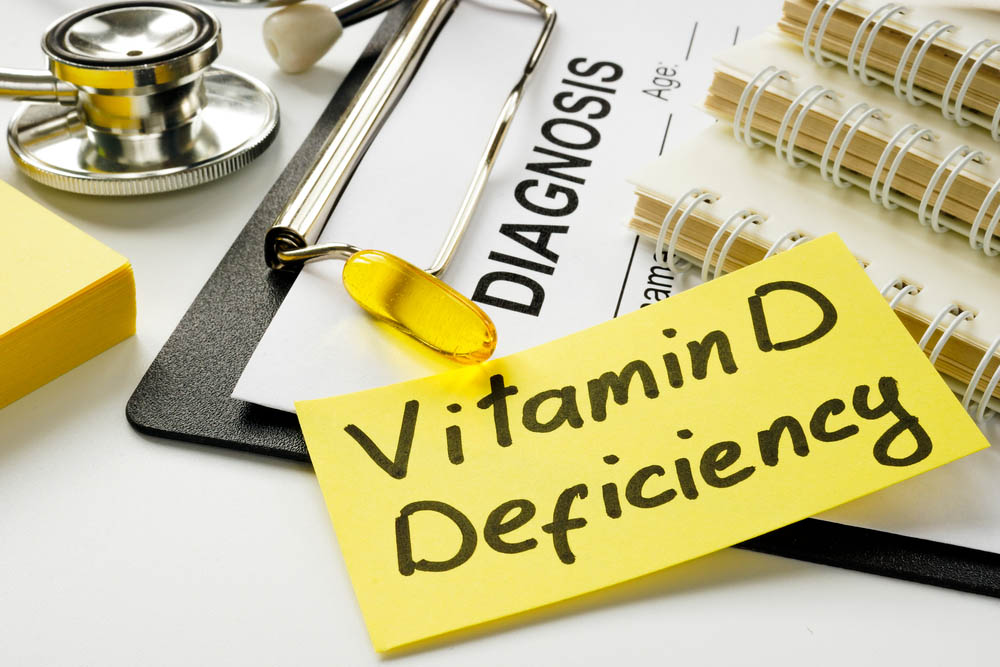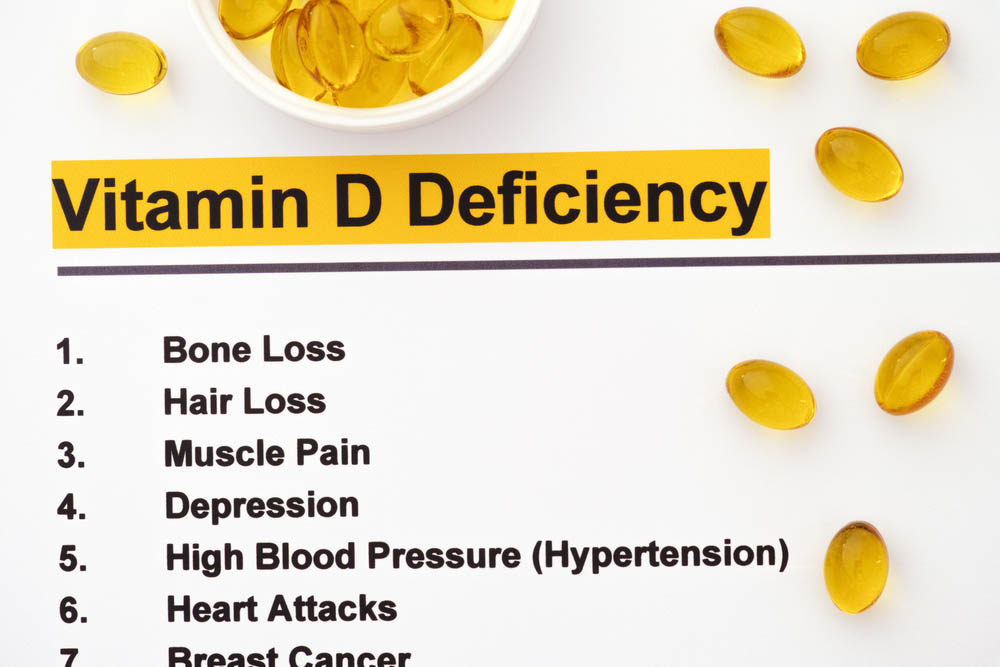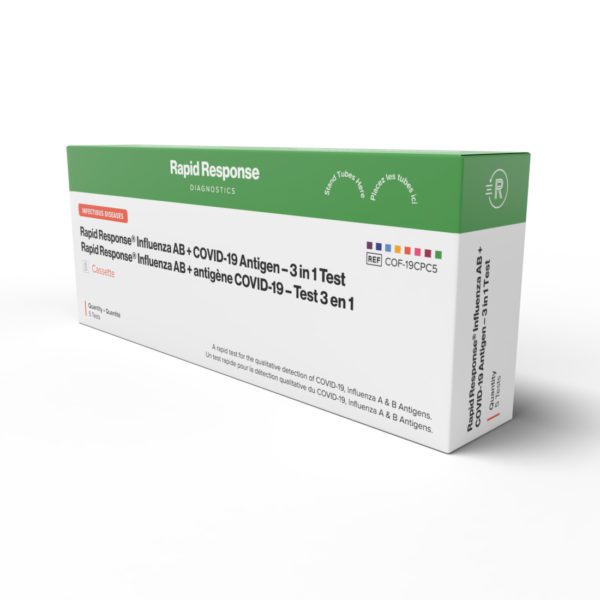Vitamin D deficiency is a prevalent health concern that can have far-reaching implications. From fatigue to impaired wound healing, the symptoms associated with this condition can significantly impact your quality of life.
But what causes this deficiency in the first place? Is it solely due to limited sunlight exposure, or are there other factors at play?
Also, how is vitamin D deficiency diagnosed, and what are the available treatment options?
What is vitamin D deficiency?
Vitamin D deficiency is a condition characterized by inadequate levels of vitamin D in the body, leading to various symptoms and potential health consequences. This deficiency can arise due to limited exposure to sunlight, inadequate intake of vitamin D-rich foods or impaired absorption of the vitamin.
Vitamin D deficiency can also have other effects on the body, since it:
- Contributes to respiratory tract infections, like the common cold, bronchitis and pneumonia
- Affects daily activities and productivity
- Increases risk of bone loss and diseases like osteoporosis
- Is linked to hair loss and muscle pain
Why is vitamin D so important?
Vitamin D helps in maintaining optimal bone health as it improves calcium absorption and bone metabolism.
Aside from that, this essential nutrient also contributes to other health aspects, like immune function and mental health.
While the effects of vitamin D supplementation on mental health are still being studied, some reviews have shown that it may relieve symptoms of depression.
Who does vitamin D deficiency affect?
People who are at higher risk for vitamin D deficiency include:
- Those with darker skin
- Breastfeeding infants
- Adults over the age of 65
Darker skin contains more melanin, which reduces the skin’s ability to produce vitamin D from sunlight. This puts those with darker skin at a higher risk of deficiency.
Breastfeeding infants rely on their mother’s vitamin D stores, and if the mother is deficient, the infant is also at risk. Also, infants and young children have a higher demand for vitamin D due to their rapid growth and development.
Adults over the age of 65 are at a higher risk because their skin becomes less efficient at producing vitamin D as they age. They also tend to spend less time outdoors and may have reduced nutrient absorption.
Other factors can also increase the risk of vitamin D deficiency, including:
- Living in regions with little sunlight or far from the equator
- Being overweight or obese
- Having chronic kidney or liver disease and conditions that affect nutrient absorption
- Those who take medications, such as statins, that affect vitamin D metabolism
How common is vitamin D deficiency?
The prevalence of vitamin D deficiency is a significant concern worldwide. It’s estimated that over one billion people worldwide have inadequate levels of vitamin D in their blood.
That said, it’s crucial to raise awareness about the importance of maintaining adequate vitamin D levels and to encourage those at risk to seek appropriate supplementation or dietary modifications.
Signs and symptoms of vitamin D deficiency?
The signs and symptoms of vitamin D deficiency can vary but recognizing them is important for early detection and intervention.

Here are the most common ones.
Frequent illness or infections
A common sign of vitamin D deficiency is experiencing frequent illness or infections. Since vitamin D helps in supporting the immune system and its ability to fight off infections, having low levels of it means compromising your immune system.
Fatigue and tiredness
Another sign is experiencing fatigue and tiredness. Low levels of vitamin D have been associated with feelings of fatigue and a lack of energy.
Research has shown that those with vitamin D deficiency may experience decreased muscle strength and endurance, which can lead to feeling more tired throughout the day. Since vitamin D contributes to regulating sleep patterns as well, low levels of it are linked to poor sleep quality.
Bone and back pain
Vitamin D deficiency can manifest in the form of bone and back pain.
Lower levels of vitamin D have been linked to conditions such as arthritis and muscle pain. Some studies have also shown an association between lower vitamin D levels and more severe lower back pain.
Depression
Understanding the relationship between vitamin D and mental health requires further research, but current studies show that in some cases, it can be a potential manifestation of vitamin D deficiency.
Depression is characterized by a persistent feeling of sadness and loss of interest or pleasure in daily activities. Studies have shown a link between low vitamin D levels and an increased risk of developing depression, particularly in older adults.
Impaired wound healing
Vitamin D helps in forming new skin and controlling inflammation, both of which are essential for the healing process. Impaired wound healing is characterized by slow or compromised healing after surgery or injury.
Bone loss
In severe cases, vitamin D deficiency can lead to low bone mineral density, which increases the risk of fractures and development of bone diseases like osteoporosis, especially in older adults.
Hair loss
Hair loss can be a potential sign and symptom of vitamin D deficiency. Research has found a connection between low vitamin D levels and alopecia areata, a condition characterized by patchy hair loss.
Studies have also shown that topical application of synthetic vitamin D can have positive effects on hair regrowth.
Muscle pain
Muscle pain is a common sign and symptom associated with vitamin D deficiency. Studies have found a high prevalence of vitamin D deficiency in people with chronic pain. The vitamin D receptor is present in nerve cells involved in pain signaling, which suggests a potential link between low vitamin D levels and muscle pain.
Weight gain
There are several mechanisms by which vitamin D deficiency may affect weight gain.
First, vitamin D plays a role in regulating appetite and satiety hormones, such as leptin and ghrelin, which control hunger and fullness.
Second, vitamin D deficiency has been linked to a decrease in energy expenditure and an increase in fat storage.
Lastly, vitamin D deficiency may lead to insulin resistance, a condition that promotes fat accumulation.
Anxiety
One symptom of vitamin D deficiency is the potential presence of anxiety. Research has shown that low levels of vitamin D may be associated with increased anxiety in older adults.
What causes vitamin D deficiency?
The primary contributing factors to the development of a vitamin D deficiency include:
- Sunlight
- Lifestyle choices
- Medical conditions
- Genetics
- Obesity
Sunlight triggers the synthesis of vitamin D in the skin, and without enough exposure, your body cannot produce enough of this essential nutrient.
However, exposing your skin to the sun doesn’t guarantee having enough vitamin D levels. For example, those who consistently cover their skin may obtain less amount of vitamin D than those who don’t.
Also, people with darker skin have higher levels of melanin, which can reduce the skin’s ability to produce vitamin D in response to sunlight.
Certain medical conditions, especially those that affect nutrient absorption, can also contribute to vitamin D deficiency. These include:
- Chronic kidney or liver disease
- Celiac disease
- Inflammatory bowel disease
How is vitamin D deficiency diagnosed?
There are two main types of blood tests that can be used to diagnose vitamin D deficiency.
The first is a total 25(OH)D test, which measures both the inactive form (25(OH)D2) and the active form (25(OH)D3) of vitamin D. The second is a 25(OH)D3 test, which specifically measures the active form of vitamin D.
The normal range for 25(OH)D levels is generally considered to be between 30 and 100 nanograms per milliliter (ng/mL).
To evaluate your vitamin D status, your healthcare provider will consider these factors along with your vitamin D test results:
- Medical history
- Physical examination findings
- Symptoms, if any
How is vitamin D deficiency treated?
Once you learn your vitamin D status, your healthcare provider may recommend any of these treatments.
Spending time outdoors and allowing your skin to be exposed to sunlight is an easy, fun and effective way to obtain vitamin D. While doing so, take precautions to protect the skin from excessive sun exposure and potential sunburn by limiting the time spent in the sun and applying sunscreen with a sufficient sun protection factor (SPF).
Another option is to increase your consumption of vitamin D-rich foods, which include:
- Fatty fish like salmon and mackerel
- Egg yolks
- Fortified cereals
- Fortified milk
- Juices
- Yogurt
- Beef liver
Lastly, if you’re unable to do the first two, your doctor may recommend taking vitamin D supplements.
Vitamin D supplements, such as cholecalciferol, are available over the counter and can help raise vitamin D levels. In severe cases of deficiency, prescription vitamin D or injections may be necessary.
Consult with your healthcare professional for personalized advice on managing vitamin D deficiency, including the appropriate dosage of supplements, sun exposure guidelines and dietary recommendations.
Regular monitoring of vitamin D levels through blood tests may also be recommended to see to it that you have regular vitamin D levels.
Conclusion
Vitamin D deficiency is a common health issue that can lead to fatigue, frequent illness or infections, bone and back pain, anxiety and depression, impaired wound healing and more serious health conditions.
Depending on the severity of the deficiency, healthcare providers may recommend consuming vitamin D-rich foods, practicing safe sun exposure or taking vitamin D supplements.























































